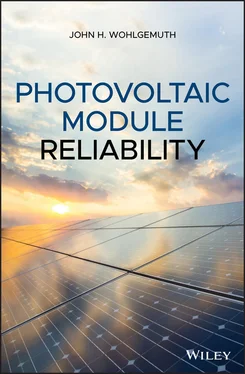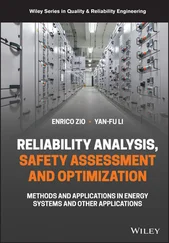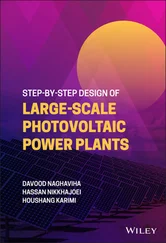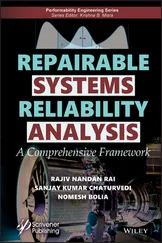1 Cover
2 Photovoltaic Module Reliability
3 Acknowledgments
4 1 Introduction 1.1 Brief History of PVs 1.2 Types of PV Cells 1.3 Module Packaging – Purpose and Types 1.4 What Does Reliability Mean for PV Modules? 1.5 Preview of the Book References
5 2 Module Failure Modes 2.1 Broken Interconnects 2.2 Broken/Cracked Cells and Snail Trails 2.3 Delamination 2.4 Corrosion of Cell Metallization 2.5 Encapsulant Discoloration 2.6 Failure of Electrical Bonds Particularly Solder Bonds 2.7 Glass Breakage 2.8 Junction Box Problems 2.9 Loss of Elastomeric Properties of Back Sheets 2.10 Reverse Bias Hot Spots 2.11 By‐Pass Diodes 2.12 Structural Failures 2.13 Ground Faults and Open Circuits Leading to Arcing 2.14 Potential Induced Degradation 2.15 Thin‐Film Specific Defects References
6 3 Development of Accelerated Stress Tests 3.1 Thermal Cycling or Change in Temperature 3.2 Damp Heat 3.3 Humidity Freeze 3.4 Ultraviolet (UV) Light Exposure 3.5 Static Mechanical Load 3.6 Cyclic (Dynamic) Mechanical Load 3.7 Reverse Bias Hot Spot Test 3.8 Bypass Diode Thermal Test 3.9 Hail Test References
7 4 Qualification Testing 4.1 JPL Block Buy Program 4.2 Evolution of IEC 61215 Qualification Test Sequence 4.3 IEC 61215 Test Protocol 4.4 How Qualification Tests have been Critical to Improving the Reliability and Durability of PV Modules 4.5 Limitations of the Qualification Tests 4.6 PV Module Safety Certification References
8 5 Failure Analysis Tools 5.1 PV Performance – Analysis of Light I–V Curves 5.2 Performance as a Function of Irradiance 5.3 Dark I–V Curves 5.4 Visual Inspection 5.5 Infrared (IR) Inspection 5.6 Electroluminescence (EL) 5.7 Adhesion of Layers, Boxes, Frames, etc. References
9 6 Using Quality Management Systems to Manufacture PV Modules 6.1 Quality Management Systems 6.2 Using ISO 9000 and IEC 61215 6.3 Why just Using IEC 61215 and ISO 9000 is No Longer Considered Adequate? 6.4 Customer Defined “Do It Yourself” Quality Management and Qualification Systems (IEC 61215 on Steroids) 6.5 Problems with the “Do It Yourself” System References
10 7 The PVQAT Effort 7.1 Task Group 1: PV QA Guidelines for Module Manufacturing 7.2 Task Group 2: Testing for Thermal and Mechanical Fatigue 7.3 Task Group 3: Testing for Humidity, Temperature and Voltage 7.4 Task Group 4: Testing for Diodes, Shading and Reverse Bias 7.5 Task Group 5: Testing for UV, Temperature and Humidity 7.6 Task Group 6: Communications of Rating Information 7.7 Task Group 7: Testing for Snow and Wind Load 7.8 Task Group 8: Testing for Thin‐Film Modules 7.9 Task Group 9: Testing for Concentrator Photovoltaic (CPV) 7.10 Task Group 10: Testing for Connectors 7.11 Task Group 11: QA for PV Systems 7.12 Task Group 12: Soiling and Dust 7.13 Task Group 13: Cells References
11 8 Conformity Assessment and IECRE 8.1 Module Conformity Assessment – PowerMark, IECQ, PVGAP, and IECEE 8.2 IECRE – Conformity Assessment for PV Systems References
12 9 Predicting PV Module Service Life 9.1 Determining Acceleration Factors 9.2 Impact of Design and Manufacturing on Failure or Degradation Rates for PV Modules 9.3 Impact of Location and Type of Mounting on Failure or Degradation Rates for PV Modules 9.4 Extended Stress Testing of PV Modules 9.5 Setting Up a True Service Life Prediction Program References
13 10 What does the Future Hold for PV and a Brief Summary 10.1 Current Work on Updating Standards 10.2 Looking to the Future 10.3 Brief Summary References
14 Index
15 End User License Agreement
1 Chapter 1 Table 1.1 Process for making monolithically integrated thin film modules. Table 1.2 Typical commercial module constructions.
2 Chapter 2 Table 2.1 Failure modes observed for c‐Si modules. Table 2.2 Linear thermal expansion coefficient of selected materials relevant... Table 2.3 Failure modes specific to thin modules.
3 Chapter 3Table 3.1 Process flow for usingaccelerated stress tests (ASTs) to improve mo...Table 3.2 Accelerated stress tests (ASTs) routinely used for PV modules.
4 Chapter 4Table 4.1 Qualification tests fromJet Propulsion Laboratory (JPL) block buys....Table 4.2 Properties ofJet Propulsion Laboratory (JPL) block buy modules.Table 4.3 History ofphotovoltaic (PV) module qualification tests.Table 4.4 Technology Specific Stabilization Parameters.Table 4.5 Solarex warranty period for crystalline silicon modules.Table 4.6 Required type of insulation for different classes of modules from I...Table 4.7a Minimum Creepage values for Class III modules.Table 4.7b Minimum Creepage values for Class III modules.Table 4.8a Minimum Creepage values for Class II modules rated for 1000 V.Table 4.8b Minimum Creepage Values for Class II Modules rated for 1000 V.Table 4.9 Minimum required distance through cemented joints.Table 4.10 Impulse voltage test levels from IEC 61730‐2.
5 Chapter 7Table 7.1 PVQAT task groups.Table 7.2 The seven cities used in Bosco study [16].Table 7.3 Weather characteristics for seven cities used as input to empirical...Table 7.4 Results of combined DH/PID stress test on four types of commercial ...Table 7.5 Comparison of calculated field diode maximum temperature for open r...Table 7.6 Comparison of calculated field diode maximum temperature for roof m...
6 Chapter 8Table 8.1 Published IECRE PV system certification documents.Table 8.2 Planned IECRE PV system certification documents [33, 34].
7 Chapter 9Table 9.1 Modeling of polyethylene terephthalate (PET) hydrolysis for open rac...Table 9.2 Equivalent temperature (°C) calculated for two module constructions...Table 9.3 Equivalent temperature (°C) calculated for two mounting configurati...
8 Chapter 10Table 10.1 Proposed current levels for testing in new edition of IEC 61215.Table 10.2 Voltage Stress Levels for insulation Test (MQT 03).Table 10.3 Proposed changes to IEC 61215 to take higher operating temperature...Table 10.4 Proposed changes to IEC 61730 to take higher operating temperature...Table 10.5 Temperatures of UV exposure conditions from IEC 62788‐7‐2.
1 Chapter 1 Figure 1.1 Cross‐sectional drawing of screen‐printed cry‐Si solar cell. Figure 1.2 Cross‐sectional drawing of monolithically integrated thin film mo... Figure 1.3a Cross‐sectional drawing of glass/encapsulant/cry‐Si cells/encaps... Figure 1.3b Cross‐sectional drawing of glass/encapsulant/cry‐Si cells/encaps... Figure 1.3c Cross‐sectional drawing of flexible cry‐Si module. Figure 1.4a Cross‐sectional drawing of front glass/thin film cells/encapsula... Figure 1.4b Cross‐sectional drawing of front glass/encapsulant/thin film cel... Figure 1.4c Cross‐sectional drawing of module structures for thin film wafer...
2 Chapter 2 Figure 2.1 Electroluminescence (EL) picture of module with multiple broken i... Figure 2.2 Magnified picture of interconnect ribbon with a crack [1]. Figure 2.3 Electroluminescence (EL) picture of module with many broken cells... Figure 2.4 Cells with snail trails. Figure 2.5 Delamination over the Junction Box of the encapsulant from front ... Figure 2.6 Delamination between encapsulant and cell surface in Siemens Sola... Figure 2.7 Corrosion of the front metallization on solar cells [11]. Figure 2.8 Corrosion on corner of glass–glass module [11]. Figure 2.9 Corrosion of cells in Polyvinyl butyral (PVB) Module [12]. Figure 2.10 Example of discolored Ethylene Vinyl Acetate (EVA) formulation A... Figure 2.11a Characterization of unexposed module. Figure 2.11b Characterization of module after 10 years of field exposure in ... Figure 2.12 Example of single point solder bond failure on bus bar [1]. Figure 2.13 Example of Multiple Solder Bond Failures on One Cell [20]. Figure 2.14 Module with tempered glass broken by impact.
Читать дальше












